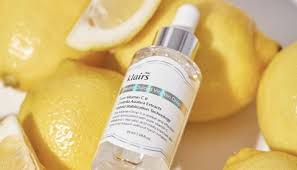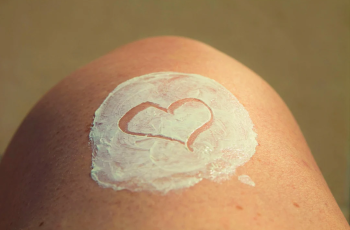
Skin Care Ingredients That Protect Skin from Pollution: A Comprehensive Guide
In today’s modern world, environmental pollution is an unavoidable part of daily life. From the smog-laden skies of urban cities to the exhaust fumes released by vehicles and industrial processes, the air we breathe is often filled with harmful substances. While the impact of pollution on respiratory and cardiovascular health is widely acknowledged, fewer people realize the significant and often damaging effects pollution has on the skin—the body’s largest and most exposed organ.
How Pollution Affects the Skin
The skin acts as a protective barrier between our internal organs and the external environment. Unfortunately, this means it is constantly exposed to pollutants and toxins in the air. Prolonged or repeated exposure to environmental pollutants can lead to a range of skin issues including:
Atopic dermatitis (eczema)
Acne and breakouts
Hyperpigmentation and dark spots
Increased skin sensitivity
Accelerated aging (fine lines and wrinkles)
Loss of elasticity
Dull and uneven skin tone
Pollution can damage the skin by generating free radicals, which are unstable molecules that disrupt healthy cellular processes. These free radicals contribute to oxidative stress, a condition that weakens the skin’s structural proteins like collagen and elastin, leading to premature aging and inflammation.
In addition to outdoor pollutants, lifestyle-related toxins such as cigarette smoke, cannabis smoke, vaping aerosols, and excessive alcohol intake can also negatively affect the skin. These substances introduce a myriad of chemical compounds into the body and directly onto the skin, increasing the load of environmental stressors.
Why Pollution Protection in Skin Care Matters
Using protective skincare products specifically formulated to defend against pollution can significantly reduce its harmful effects. Antipollution skincare is particularly vital for those living in urban areas or exposed to high levels of environmental toxins due to their lifestyle or occupation.
What Kind of Pollutants Harm the Skin?
To understand how to effectively protect the skin, it’s important to first identify the types of pollutants that pose a risk:
1. Particulate Matter (PM)
Tiny airborne particles that come from car exhaust, industrial emissions, dust, and combustion. PM can penetrate skin pores and even the deeper layers of the skin, causing inflammation and oxidative stress.
2. Heavy Metals
Lead, mercury, arsenic, and cadmium are often present in air and water pollution. These metals can build up in the skin over time, disrupting cellular function and leading to skin damage.
3. Polycyclic Aromatic Hydrocarbons (PAHs)
These are a group of chemicals released during the incomplete burning of coal, oil, gas, wood, garbage, or tobacco. One well-known PAH is benzopyrene (BaP), which can damage DNA and accelerate skin aging.
4. Gaseous Pollutants
Gases such as carbon monoxide, sulfur dioxide, nitrogen oxides, and ozone can dehydrate the skin and interfere with its barrier function.
5. Long-lasting Pollutants (Persistent Organic Pollutants or POPs)
These include substances like dioxins and polychlorinated biphenyls (PCBs), which accumulate in fatty tissues and have long-term detrimental effects on skin health.
How Pollutants Enter the Body
Pollutants enter the human body through three main pathways:
Inhalation – When we breathe, airborne pollutants enter our lungs and can be absorbed into the bloodstream.
Skin Absorption – Pollutants can penetrate the skin through hair follicles, sweat glands, or by diffusing through the lipid matrix between skin cells.
Ingestion – Polluted water and contaminated food can introduce toxins into the body, some of which may manifest in skin issues such as rashes, acne, or pigmentation.
Protective Skin Care Routine: Step-by-Step
A strategic skincare regimen can help shield the skin from environmental pollutants while supporting its natural detoxification and repair processes.
1. Cleanse Thoroughly Every Night
Pollutants settle on the skin throughout the day. A gentle but effective cleanser can help remove dirt, oil, and particulate matter. Look for cleansers that contain mild surfactants and hydrating ingredients like glycerin and ceramides.
2. Apply Antioxidant-Rich Serums
Antioxidants are the skin’s best defense against free radicals. Ingredients like Vitamin C, Vitamin E, niacinamide, resveratrol, and ferulic acid help neutralize oxidative stress before it damages the skin cells.
3. Moisturize with Barrier-Reinforcing Products
Pollutants can weaken the skin barrier, leading to dryness and irritation. Use moisturizers that strengthen the skin’s protective layer. Ceramides, cholesterol, fatty acids, and occlusive agents like dimethicone are excellent choices.
4. Use Repairing Ingredients at Night
Nighttime is when the skin undergoes its natural repair cycle. Ingredients like retinoids, peptides, and growth factors can accelerate skin regeneration and repair the damage caused by pollution during the day.
Top Antipollution Skin Care Ingredients
Certain skincare ingredients have demonstrated the ability to protect against pollution-induced damage. Here are some standout options recommended by dermatologists:
1. Crepidiastrum Denticulatum Extract
Protects the skin from air-pollution stress, including PM, BaP, heavy metals, and UV rays
Acts as an antioxidant and anti-inflammatory
Stimulates autophagy (a process where the body removes damaged cells)
Delays cellular aging and senescence
2. Saururus Chinensis Extract
Also known as Asian Lizard’s Tail or Chinese Lizard’s Tail
Contains sauchinone, a compound that blocks free radicals and enzymes like collagenase and matrix metalloproteinases (MMPs), which break down collagen
Reduces melanin production, helping to prevent dark spots
Anti-inflammatory and antioxidant
3. Polyphenols
Found in green tea, grape seed, and other flavonoids
Powerful antioxidants that neutralize free radicals
Help reduce inflammation and strengthen the skin’s barrier
Particularly beneficial for skin exposed to smoke, alcohol, and industrial pollutants
Best Products for Pollution Protection
One standout antipollution product is the Zerafite Wrinkle Defense Barrier Cream. It is specially designed to combat the damaging effects of vaping, cannabis smoke, pollution, and excessive alcohol. This dermatologist-recommended product provides a protective barrier on the skin while delivering nourishing ingredients that support long-term skin health.
How to Choose the Right Products
The effectiveness of a skincare product often depends on matching it to your unique skin needs. The Baumann Skin Type system is a scientifically backed classification that identifies your skin type based on various characteristics like oiliness, sensitivity, pigmentation, and aging risk. Once you know your type, you can choose products that provide optimal results for your individual skin concerns.
Taking a skin type quiz based on the Baumann system can help guide your selections and ensure your skincare regimen is both protective and corrective.
Living in a City? Antipollution Skin Care is Essential
Urban dwellers face higher levels of air pollution daily. Commuting in traffic, living near industrial zones, and simply walking in a crowded city mean constant exposure to harmful particles and gases. This makes antipollution skincare not just a luxury, but a necessity for anyone looking to preserve their skin’s health and youthful appearance.
Final Thoughts: Guarding Your Skin Against Modern Pollutants
As environmental pollution becomes an increasingly prominent concern, understanding how to protect your skin from its harmful effects is more important than ever. A comprehensive skincare regimen that includes cleansing, antioxidant protection, moisturization, and nightly repair can go a long way in maintaining a healthy complexion.
Choosing skincare products with ingredients like Crepidiastrum Denticulatum, Saururus Chinensis, and polyphenols ensures that your skin is well-defended against the invisible yet potent threats lurking in our air, food, and lifestyle habits.
Much like sunscreen protects against UV damage, antipollution skincare is a daily defense strategy we all need to consider—especially in today’s environment.


